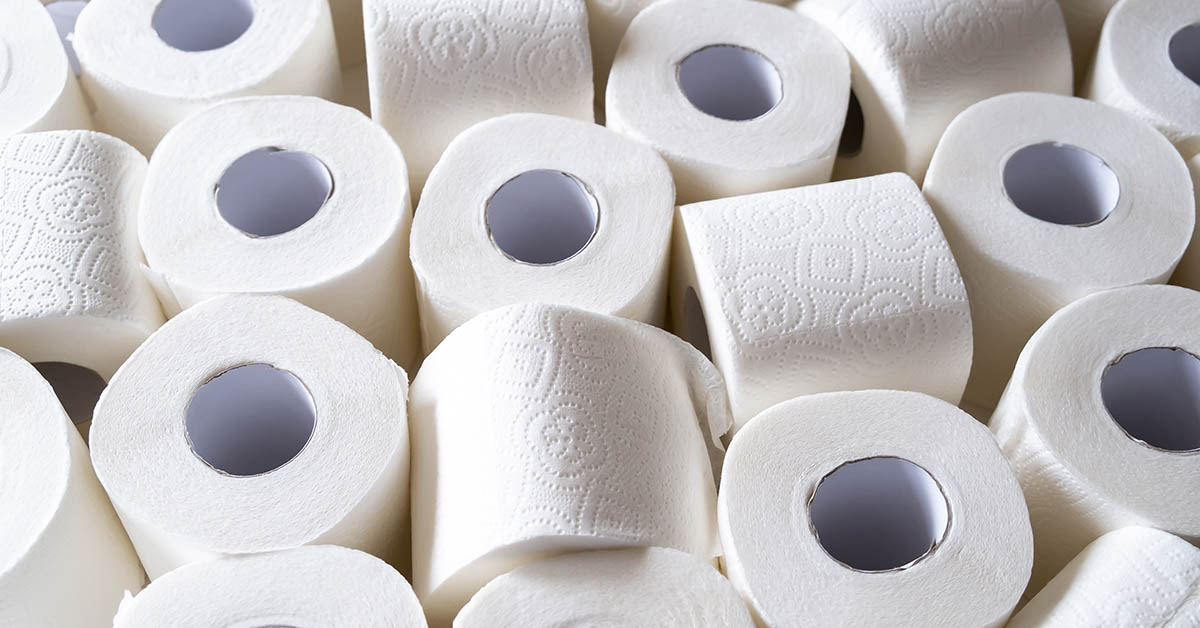Toilet paper has become a standard in Western bathroom hygiene. The pandemic panic-buying sprees are definite proof of that. However, millions of people around the world skip the paper and wash up with a water rinse. But our post-excretion cleanup has evolved dramatically over the centuries, from sponges on a stick to rice-based toilet paper, from seashells to animal furs.
The Evolution of Toilet Paper
There’s a common fallacy that ancient people were dirty and unsanitary. Although the concept of disease-causing bacteria didn’t appear until the 1800s, most historical cultures have well-documented methods of personal cleanliness. China perhaps has the longest history of toilet paper, with the practice documented from the 6th century BC. (Paper originated in China in the 2nd century BC.) For civilizations with little to no access to paper, cleaning depended on local customs and resources, like using water, snow, leaves, seashells, corn cobs, animal furs, and, believe it or not, hands.
During the Greco-Roman era, a common tool looked like a sponge attached to a stick. It’s unclear whether these sponges were commonly used once or reused. When reused, people would place them in a bucket filled with salt water or a water-vinegar solution between uses. [1]
“The most famous example of ancient ‘toilet paper’ comes from the Roman world [during the first century A.D.] and Seneca’s story about the gladiator who killed himself by going into a toilet and shoving the communal sponge on a stick down his throat,” says Erica Rowan, an environmental archaeologist and a lecturer in classical archaeology at the University of London. Another method in this era involved moss, leaves, and circular fragments of ceramic called “pessoi”. It’s likely that the ceramic caused skin irritation and external hemorrhoids over time. [2]
Furthermore, archaeologists found small pieces of cloth in a sewer in one town destroyed by the eruption of Mount Vesuvius. This may be evidence of a form of toilet paper but Rowan points out, “Cloth was made by hand in antiquity so using cloth to wipe your bum would have been quite a decadent activity. It’s the equivalent to using the softest and most expensive three-ply today.”
“Medicated Paper, for the Water-Closet”
In the 1990s, archaeologists found another version of hygiene sticks in China. The sticks are about over 2,000 years old and look similar to those found in the Greco-Roman era. Except these comprised of bamboo and other types of wood shaped into spatulas with cloths wrapped on one end. Additionally, in 1393, toilet paper made from rice was produced for the imperial family.
While the first recording of toilet paper in China came from the 6th century BC, it became a widely manufactured product by the 14th century. For the rest of the world, paper became an available commodity in the 15th century. Toilet paper, however, didn’t hit the market until 1857 when Joseph Gayetty of New York advertised a “Medicated Paper, for the Water-Closet.”
Before then, corncobs were a common alternative in the 1700s. When newspapers and magazines began getting distributed in the 1800s, they too ended up in a careful pile in the outhouses. [3]
The Panic-Buying in 1973
Within the history of toilet paper is a precedent for toilet paper panic-buying as well. In 1973, many people in Japan began to stockpile rolls. At the time, the oil crisis, inflation, and environmental degradation threatened peace and economic stability for the middle class. “For the first time since the late 1950s, it didn’t seem certain that the future would be better than the past,” said Eiko Maruko Siniawer, a historian at Williams College.
This panic-buying spread to the United States when a Wisconsin congressman sent out a statement warning about a potential shortage. Then comedian Johnny Carson made a joke about it on the Tonight Show, accidentally spreading a short but intense toilet paper panic. “To me, as a historian, it’s important not to laugh off people’s decisions and actions, but to think about why they did what they did,” said Siniawer.
Similarly, archaeologist Jennifer Bates, a postdoctoral fellow at the University of Pennsylvania’s Penn Museum explains that something as simple as toilet paper can tell us a lot about humanity. “From an anthropological perspective, we can look at the larger ways [toilet habits] affected the development of the human past into the human present and then into the human future.” [4]
Sources
- “Toilet hygiene in the classical era.” The BMJ. Philippe Charlier, Luc Brun, Clarisse Prêtre, Isabelle Huynh-Charlier. December 2012
- “What did people use before toilet paper was invented?” Live Science. Tyler Santora. September 20, 2020
- “All the Ways We’ve Wiped: The History of Toilet Paper and What Came Before.” History. Crystal Ponti. April 15, 2020
- “What did people do before toilet paper?” National Geographic. Erin Blakemore. March 31, 2020

